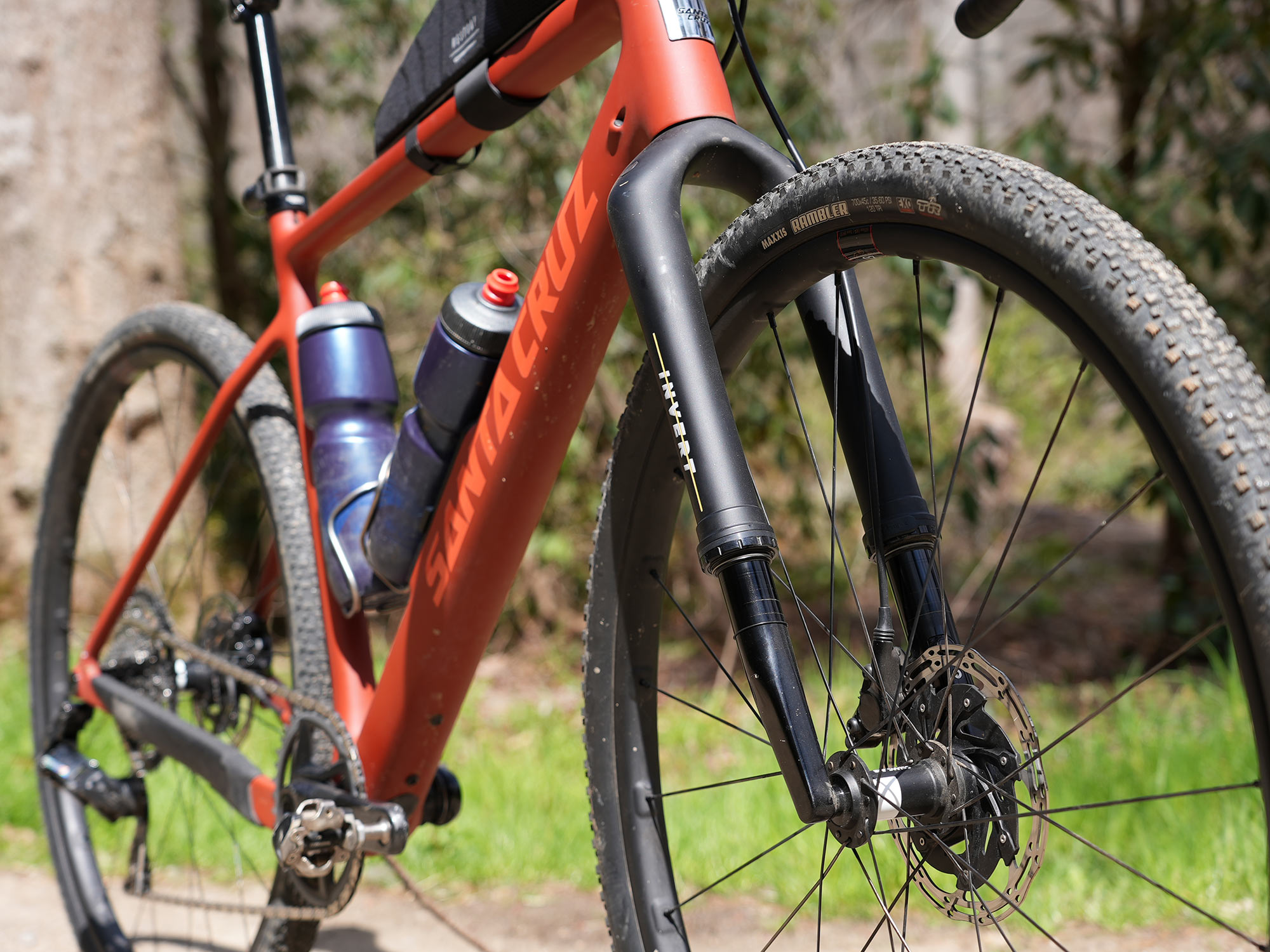The all-new Cane Creek Invert gravel suspension fork does more than just flip the sliders to the bottom. It introduces a simpler design that’s sleek and easy enough to appeal to roadies that’s also very lightweight.
It accomplishes these things by taking a fresh look at suspension through a drop bar perspective, improving through omission, and having a goal of making it nearly invisible on the bike. Here’s how and why they did it…
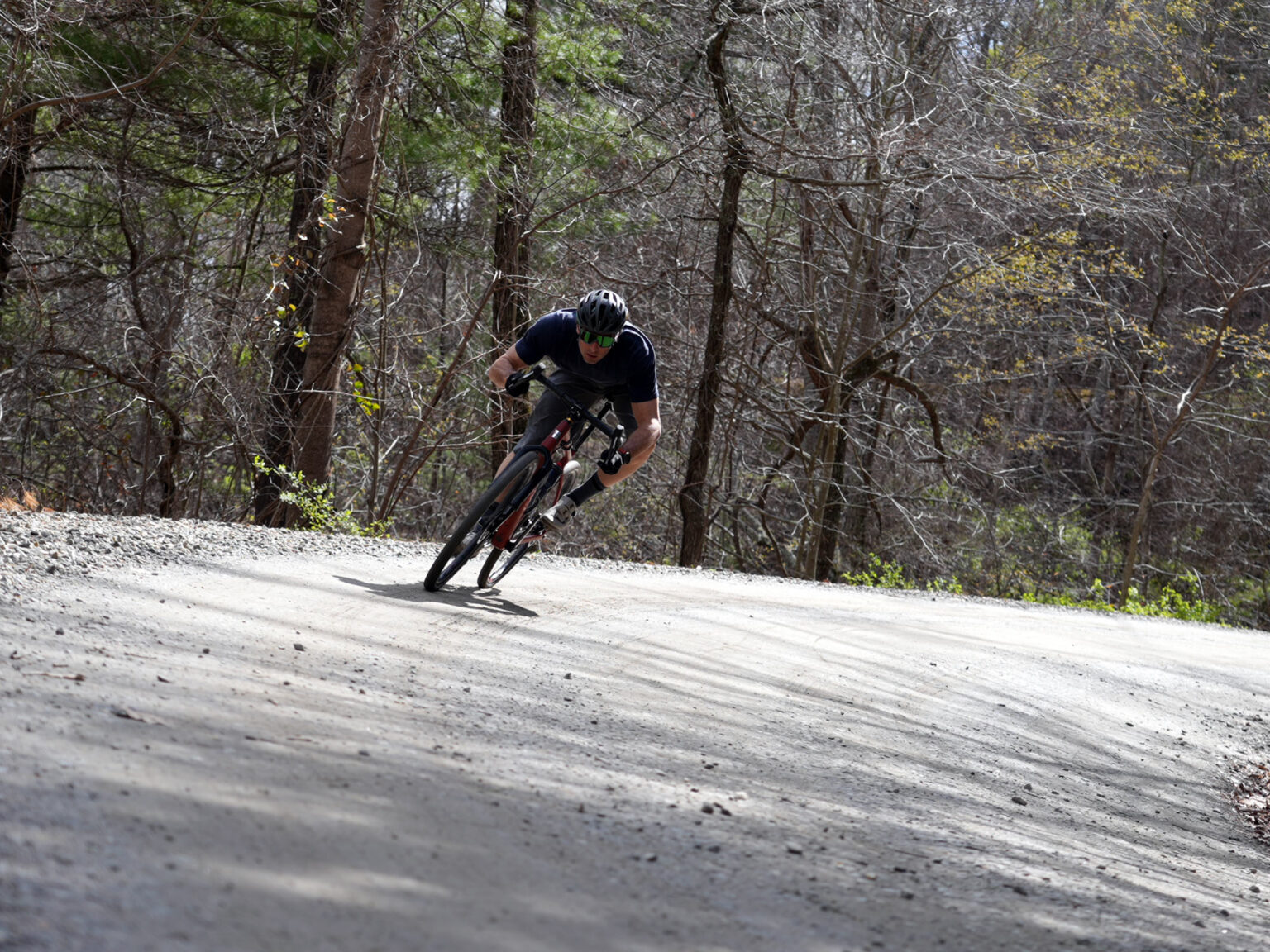
There are plenty of products that make a bike more comfortable, and Cane Creek makes two of them already – suspension stems and seat posts. But also big tires and compliant handlebars and flex stays.
But, Cane Creek says none of those get at the root problem of control.
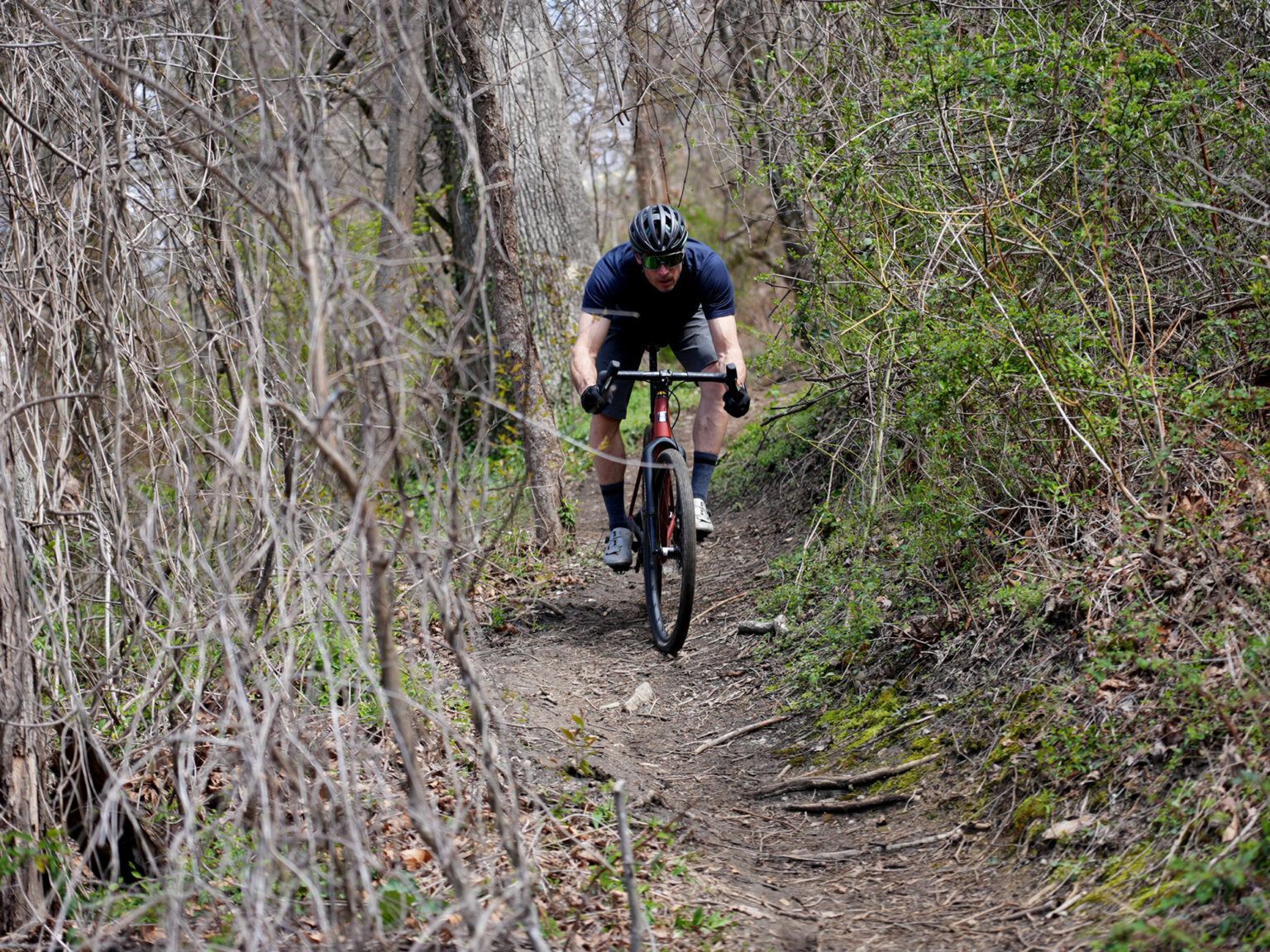
OK, but there are already plenty of gravel suspension forks, too. From ultra simple, like Lauf, to more complicated, like all the other telescoping forks with tons of damper knobs and air spring volume adjustments.
Cane Creek felt there was a sweet spot between those two things. They say the Lauf fork is great at compliance, much like their eeSilk stem and post, but isn’t as much of a suspension fork. The flip side are the forks from Rockshox, Fox, SR Suntour, MRP, Lefty Oliver, and others, which are basically shrunk-down versions of those brands’ mountain bike forks.
The Invert’s development story
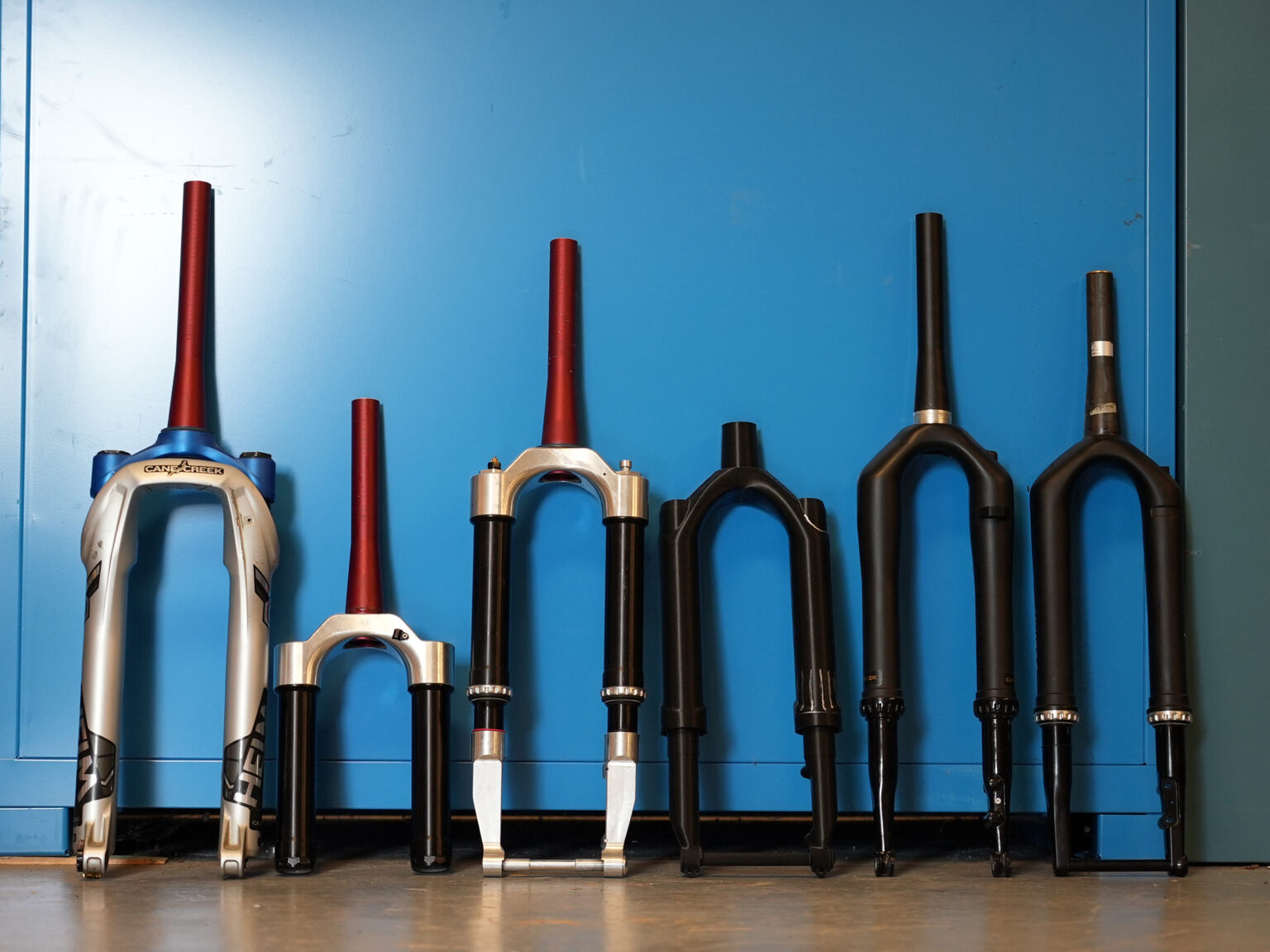
With the new Invert, they didn’t want to make a “baby mountain bike fork”.
Sure, they brought their knowledge from developing the HELM forks and their eeSilk suspension posts and stems. Between those three products, they have experience with coils, air springs, and elastomers, so they had lots of things to play with. But the mandate was clear that this needed to be a drop-bar product from the ground up.
To begin their testing, they did start with a HELM, cutting down travel to 40mm, then swapping in air, coil, and elastomer springs. They kept the top cap the same, so test riders didn’t know which version they were riding. They also rode a few competitor’s forks, and they said the modified HELM air came out on top.
Then they asked 500+ riders what gravel riding was to them, which gave them insights into how a gravel suspension product needed to differ from their MTB forks.
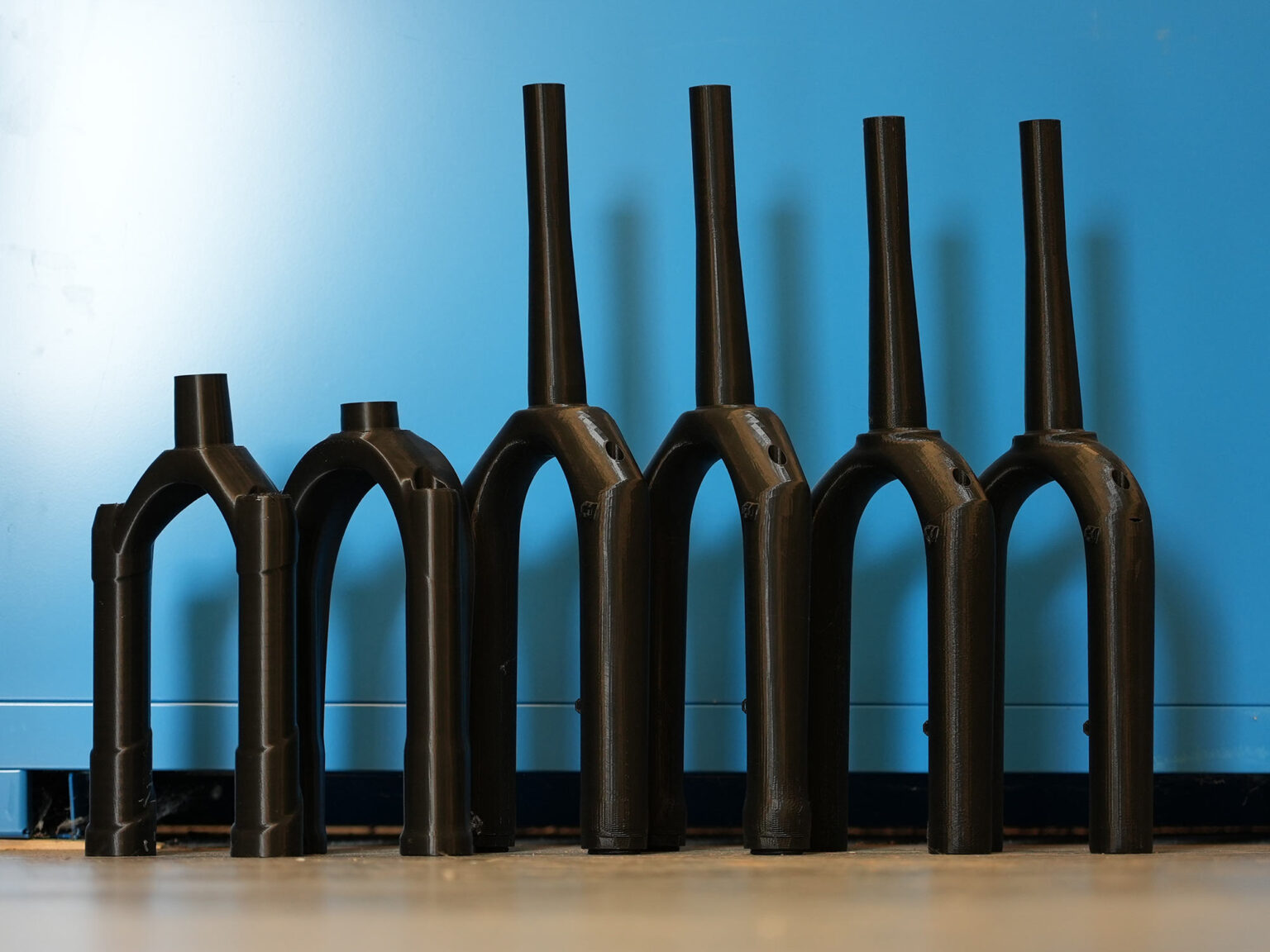
The four product pillars became:
- Rider Benefit – gives confidence, control, and a better, smoother ride
- Weight – this is 1/4 to 1/2 pound lighter than the competition
- Aesthetics – MTB-like forks simply don’t look good on gravel bikes
- Easy to use – simple to setup and use
Cane Creek says it hits the mark on all four points like nothing else on the market, which is why they’re calling it the “first gravel suspension fork.”
Basically, it’s designed as a pure-bred endurance upgrade, to turn your gravel bike into the best version of a gravel bike it can be. It’s not trying to make it a drop bar mountain bike. It’s almost as easy to own and is nearly as visually integrated as a rigid fork, but with all of the benefits of a suspension fork.
Invert Design Details
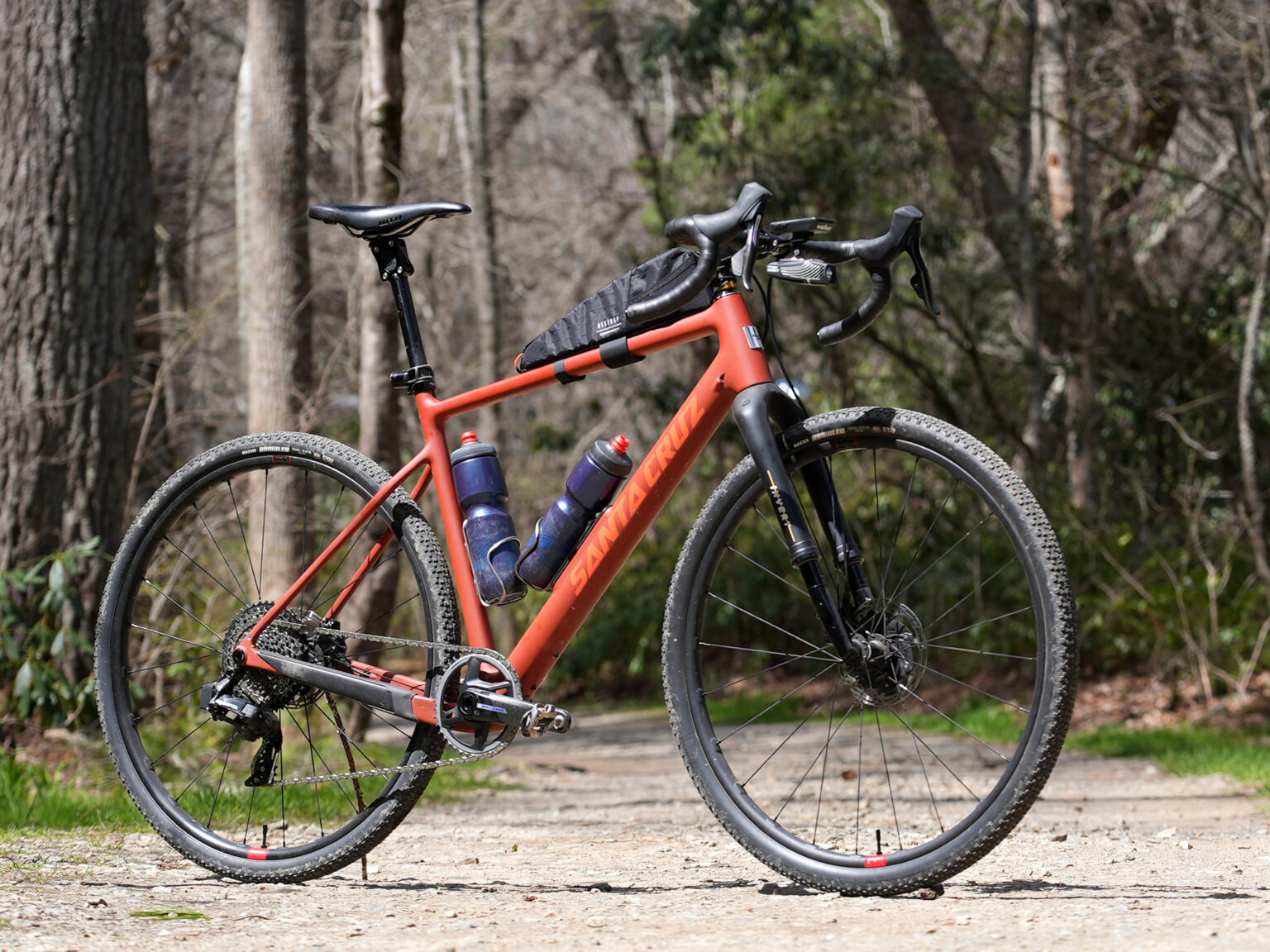
The inverted design allows for the lightest possible chassis and has less unsprung weight. Beyond that, there are four main things you need to know:
- The upper chassis is carbon & alloy
- The air spring is super simple
- There’s no damper
- There’s a version with a Climb Switch, and an SL version without it
Let’s dive into each one of those…
Invert chassis construction

The chassis is a hybrid design with carbon fiber upper and machined aluminum tubes, then they’re bonded together and the joints are sanded smooth. Visually, it looks like a full carbon upper, but it’s definitely two materials.
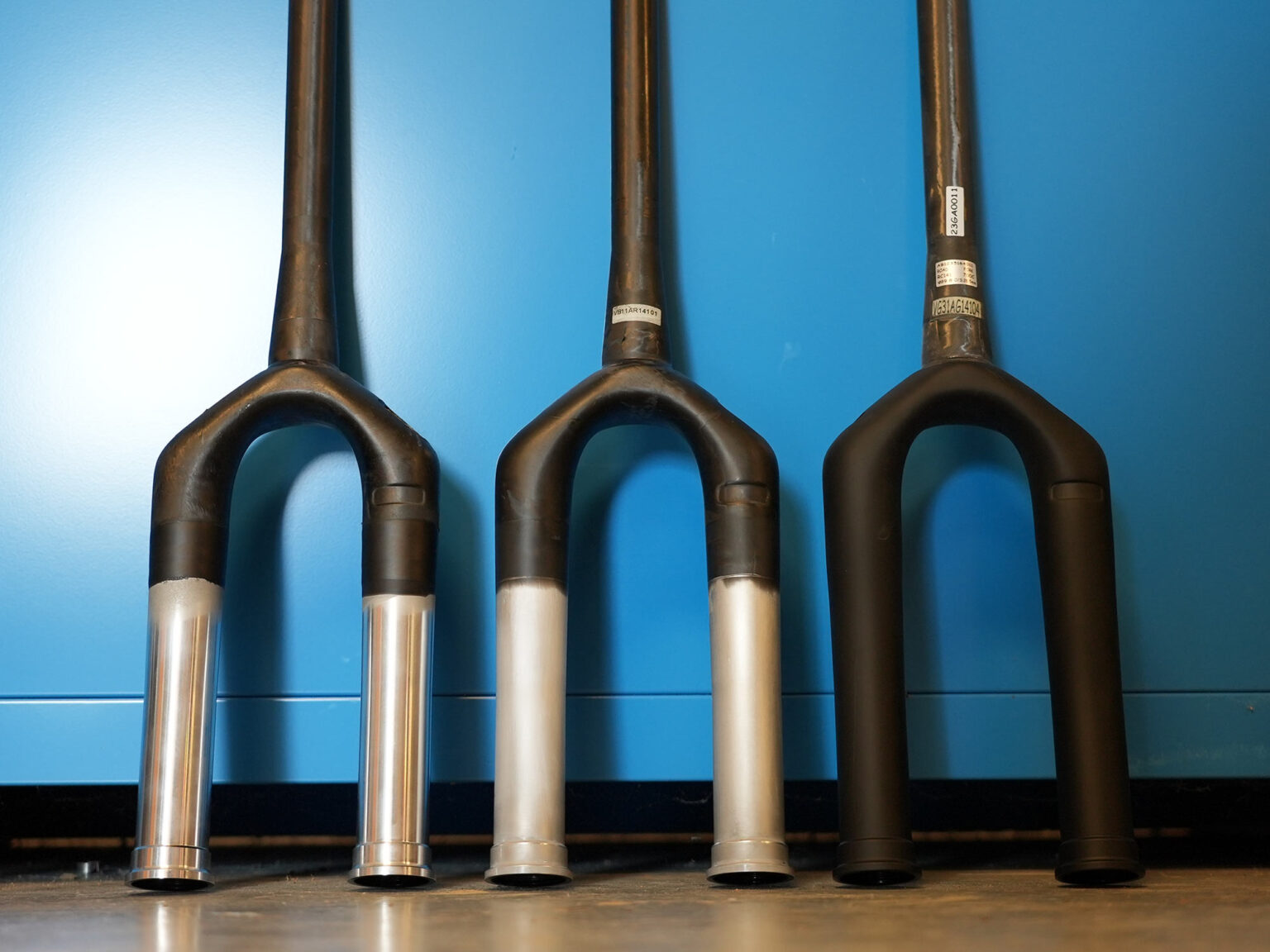
Why not full carbon? Because they needed the perfectly round alloy tubes for the lowers’ upper bushings to slide inside, because those bushings need to slide on a consistently straight, smooth surface. They say there was no need to bring the carbon fiber all the way down the legs, either, so they didn’t, which saves weight.
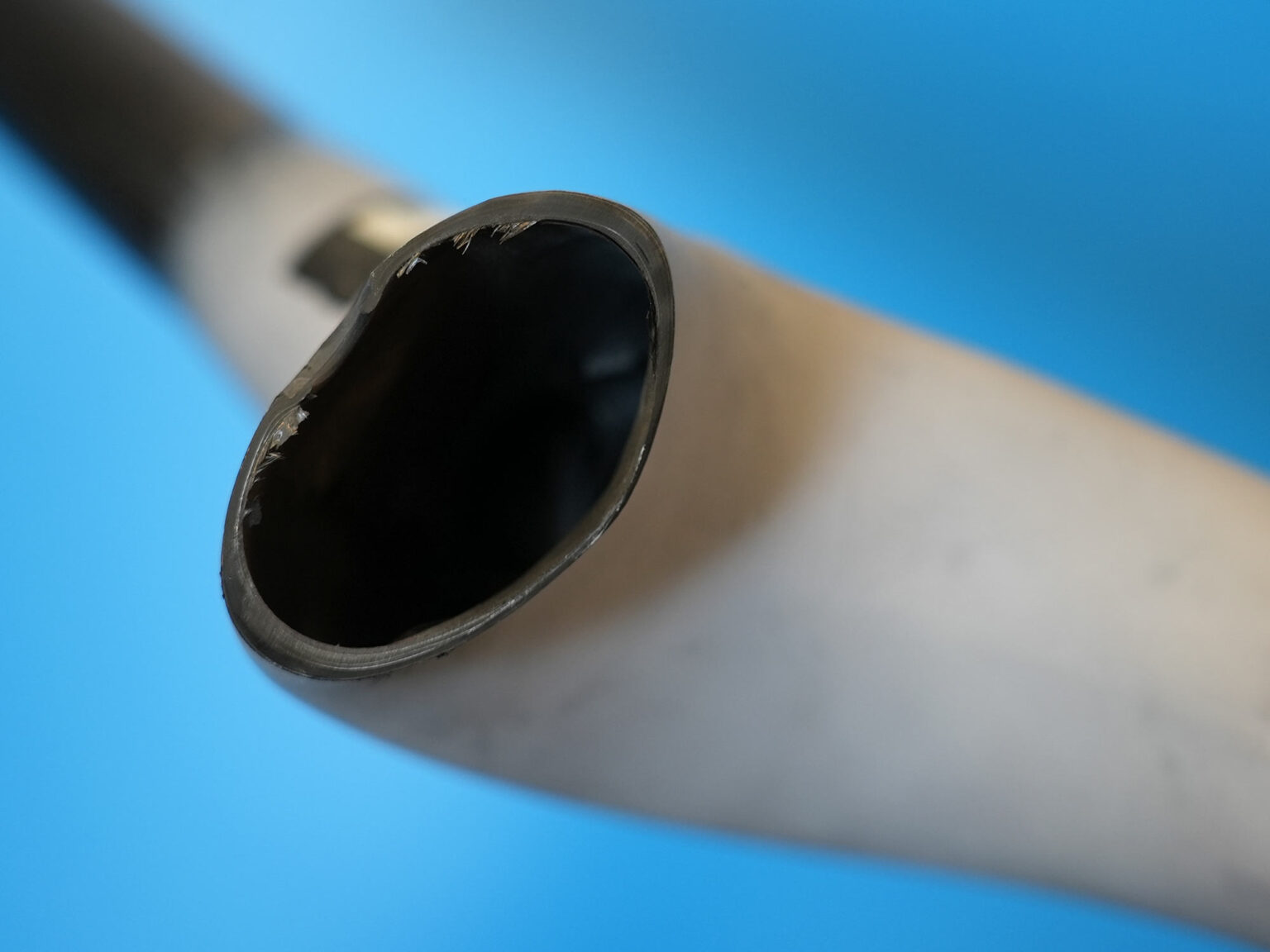
The crown-steerer unit (CSU) are full carbon fiber, with the crown race integrated into the CSU. The race has a standard 36º angle that fits Cane Creek’s lower headset bearings.

The inverted design also keeps the lower seals lubricated better, and since one of the bushings is on the lowers, the bushing spacing increases as the fork compresses through its travel, which reduces stiction and flex.
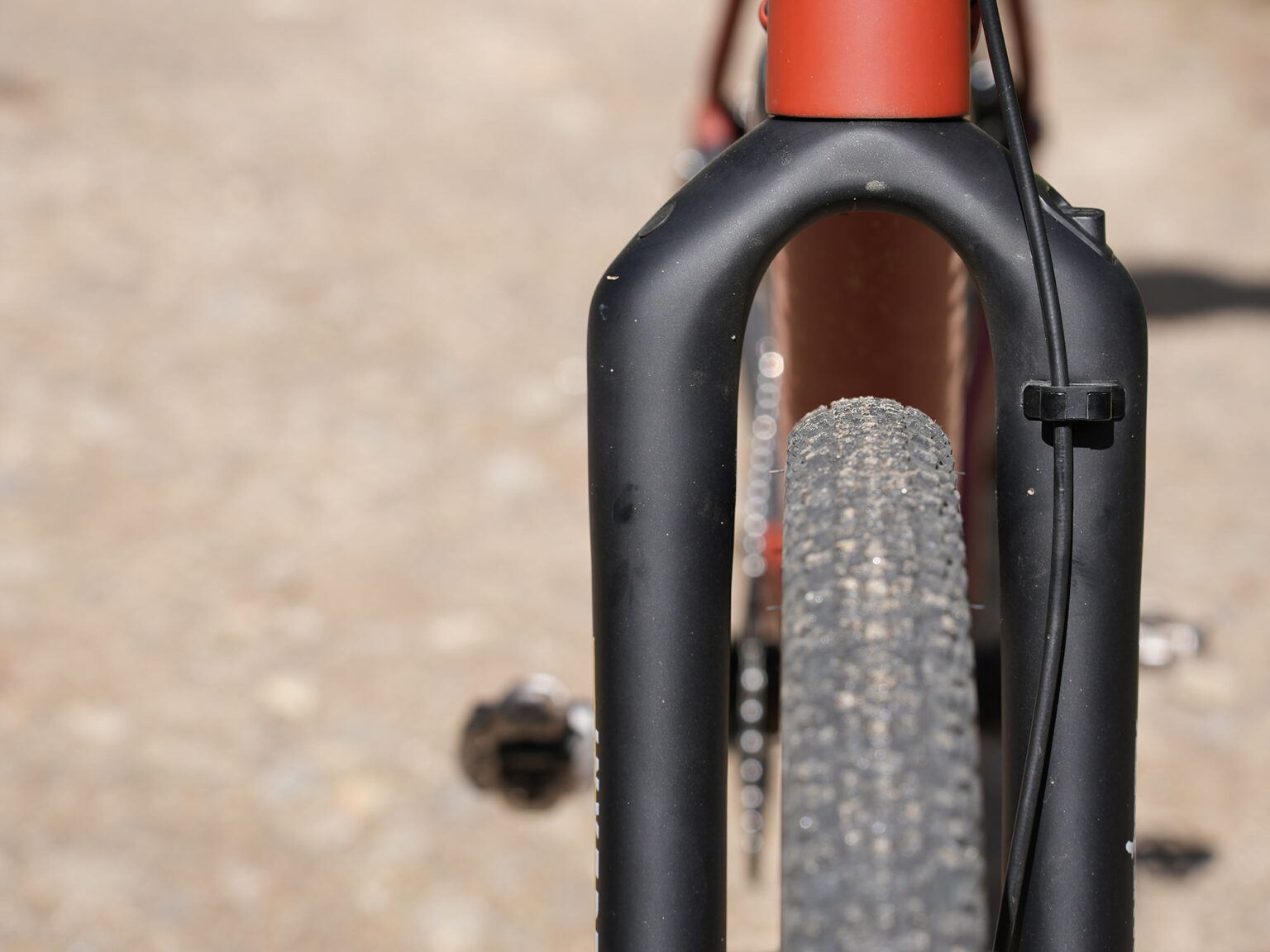
Another benefit is that there’s no arch to catch crud. Tires have way more space to pass through, even in the worst conditions. Official tire clearance is 700×50, but there’s room for a bit more if you want (it’s shown above with a 700×45 Maxxis Rambler).
Super simple air spring
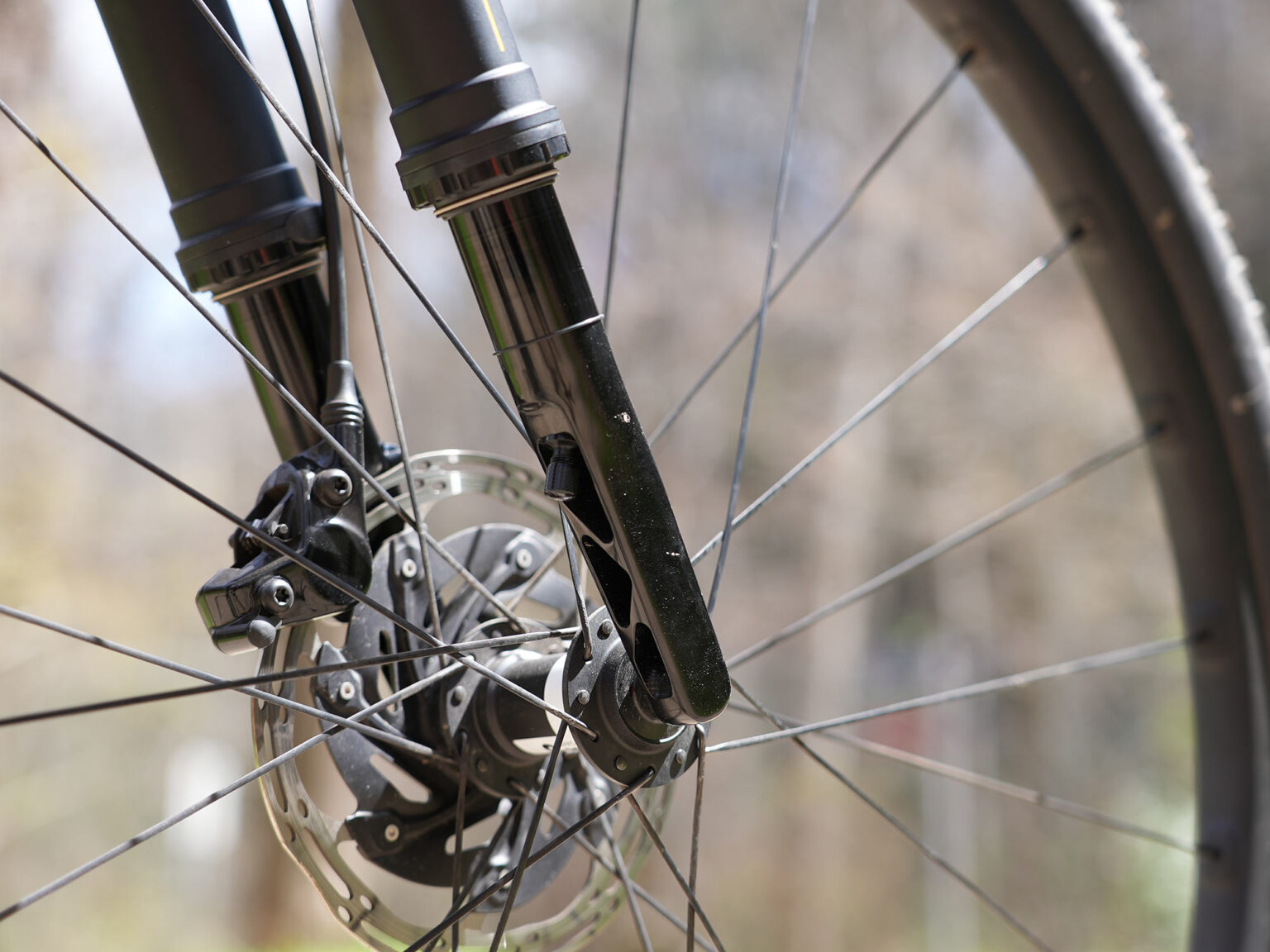
Cane Creek is aiming the Invert at the roadie-turned-gravel cyclist, not the mountain-biker-who-rides-gravel. So they wanted this to be as simple of an upgrade as carbon wheels. Just stick it on your bike and you immediately notice the benefit. To do that, they got rid of a lot of the “features” on other telescoping forks.
The air spring’s volume is preset with a single volume reducer inside the air spring. They say for most riders, it’ll work great straight out of the box with air pressure set around 95% of your body weight. If you want it softer, take some air out. Want it firmer? Add a bit more air.
It has a mildly progressive spring curve, ramping up through the travel as is typical of an air spring. Roadies: That means it gets firmer as you progress through the travel, which helps prevent a harsh bottom out.
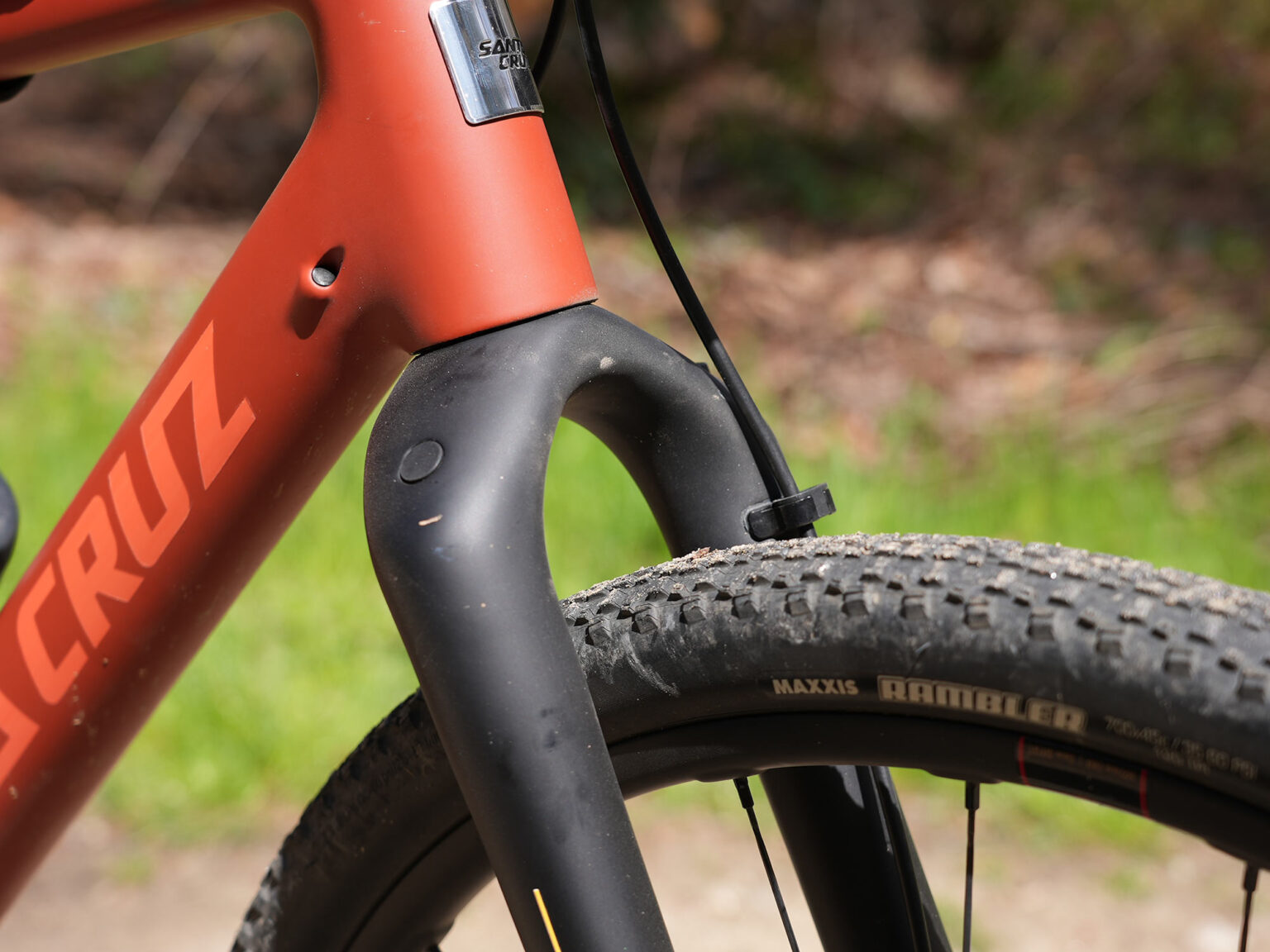
If you’re on the extreme end of users, you can install up to three total reducers, or remove them all. Doing so requires disassembly of the air spring, so they recommend taking it to a dealer for that. That said, it’s also very easily user-serviceable if you have a few basic tools…keep reading.
There is a bottom-out bumper to prevent harsh hits, but their goal was to tune the air spring so that it’s rare that you’ll bottom out unless you’re landing hard or intentionally smashing the front wheel into the ground.
Look mom, no damper!
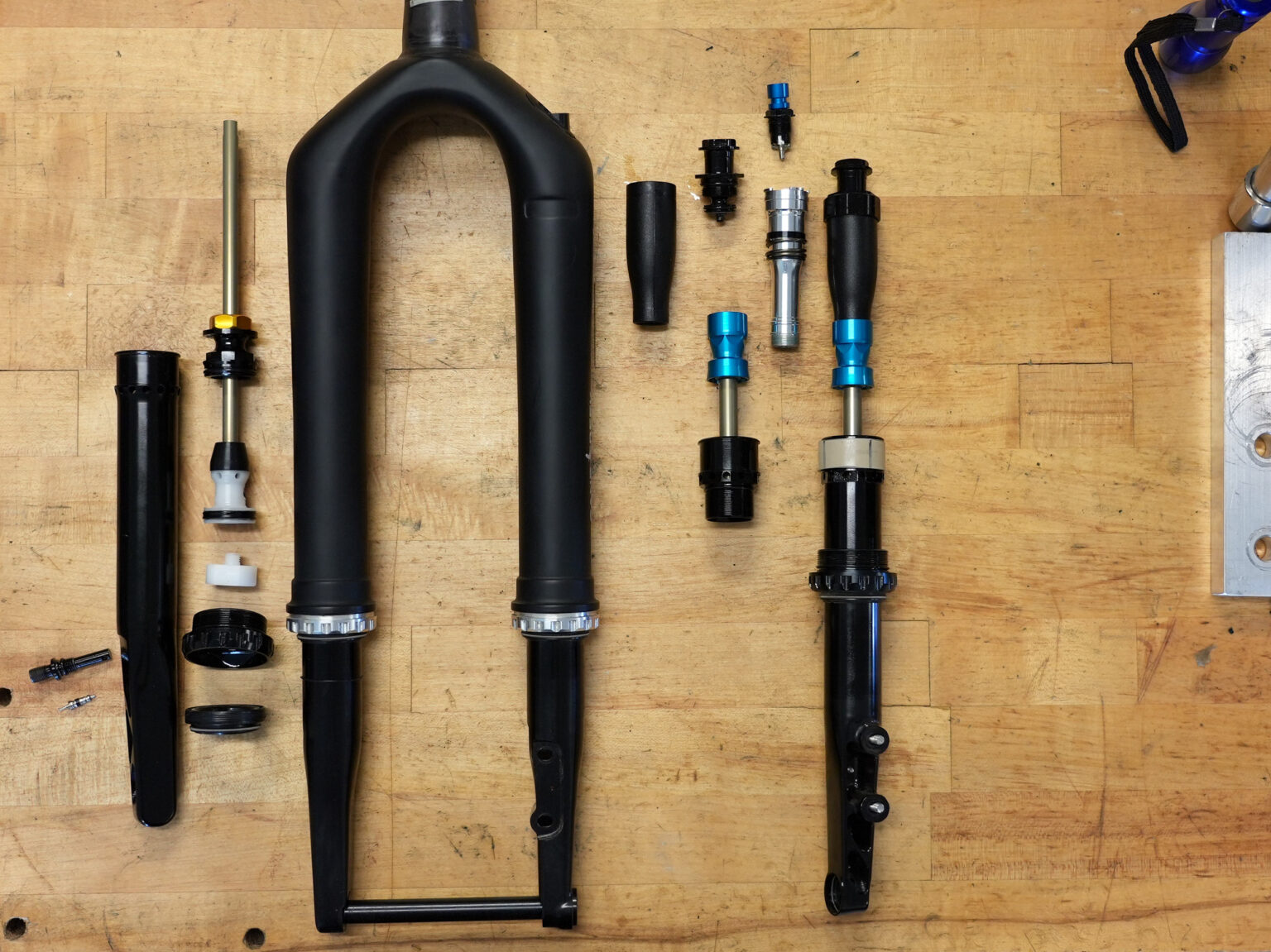
The image above shows all of the internals of the Invert. On the left is the air spring, showing from top to bottom:
- Piston shaft
- Upper seal (black & gold)
- Air piston with top-out bumper
- White volume spacer under the main piston
The space above the piston is the negative air spring, and below it is the positive air spring. On the right side of the fork is the Climb Switch lockout mechanism, which I describe below. It’s not a damper, and here’s why:
Cane Creek tested prototypes with and without a compression/rebound damper inside and found that none of the test riders noticed any real difference in performance. If anything, the compression damping limited how responsive the fork could be because, with just 30-40mm of travel, a damping circuit barely has time to actuate, anyway.
Before you dismiss it, remember that this is a fork designed to be as light as possible, as simple as possible, and be completely focused on gravel racing and riding from a drop-bar rider’s perspective. Losing the damper lets it react better to the small stuff typically found on gravel roads and trails…and now no one needs to explain what a damper is to a roadie.
Climb Switch, or not
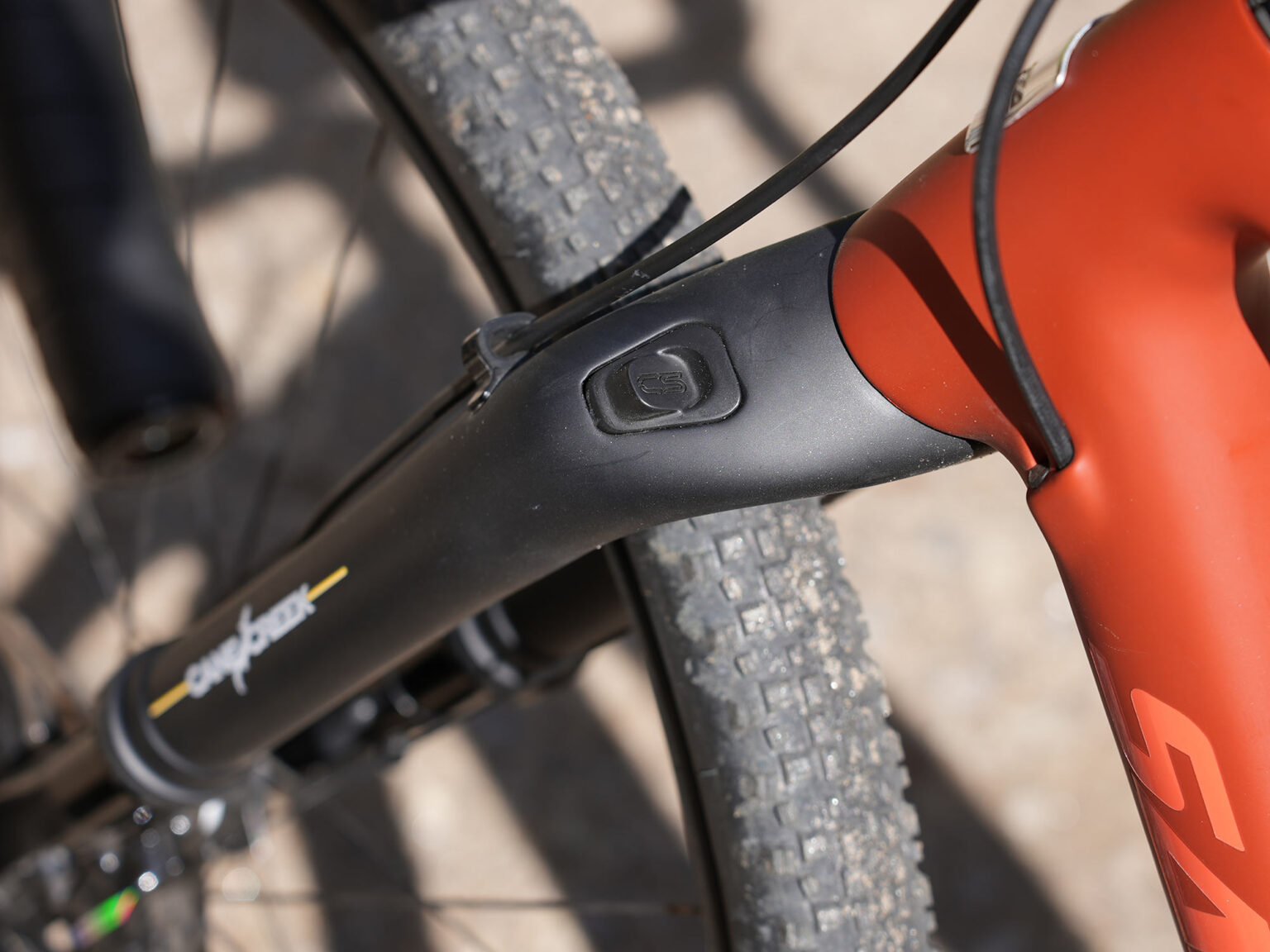
Like their mountain bike rear shocks, the Invert has a Climb Switch, which is their name for a lockout. Located on the top of the right leg, the lockout is a simple button that’s easy to click up and down while riding. No knobs, dials, or other finicky things.
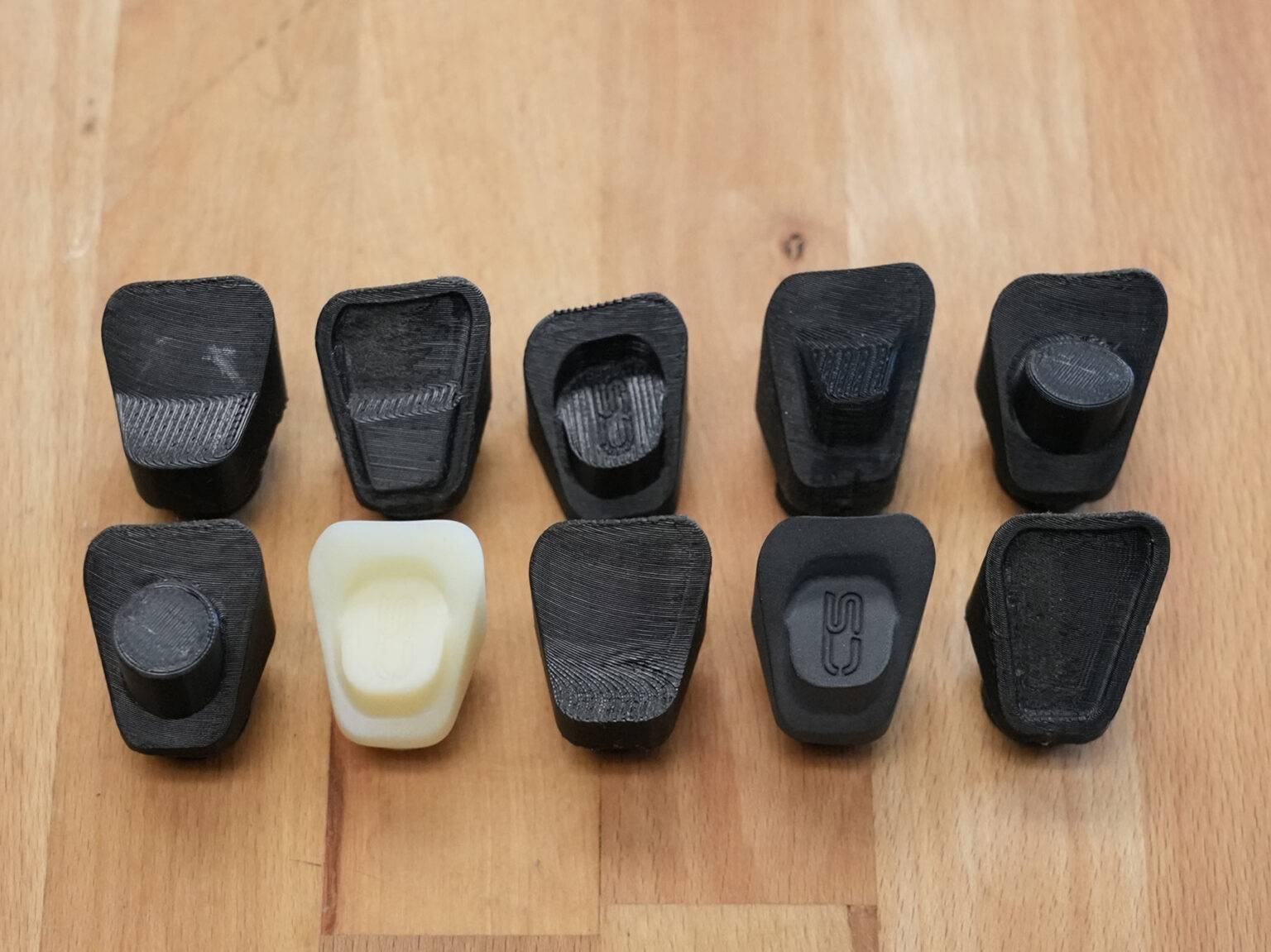
They tested a lot of different button shapes and sizes, too.

The Climb Switch button is basically a ballpoint pen mechanism, albeit a high-precision, finely machined version.
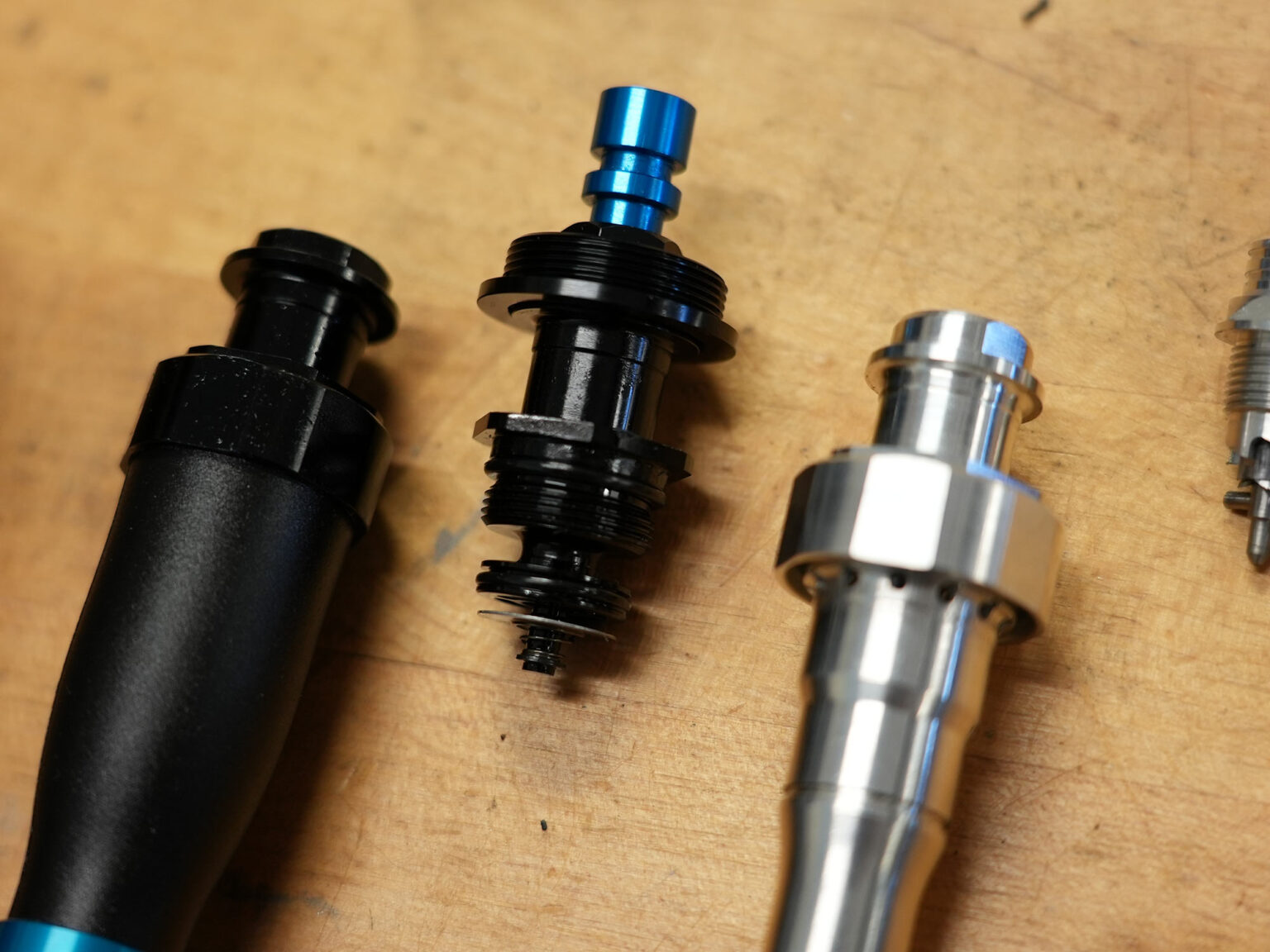
It’s a hydraulic lockout, with a small shim (center part, on the bottom) covering or opening ports for oil to flow through. That lets it blow off if you hit something really big while it’s locked out, but otherwise is very firm. The bladder is there to keep pressure on the oil to avoid cavitation.
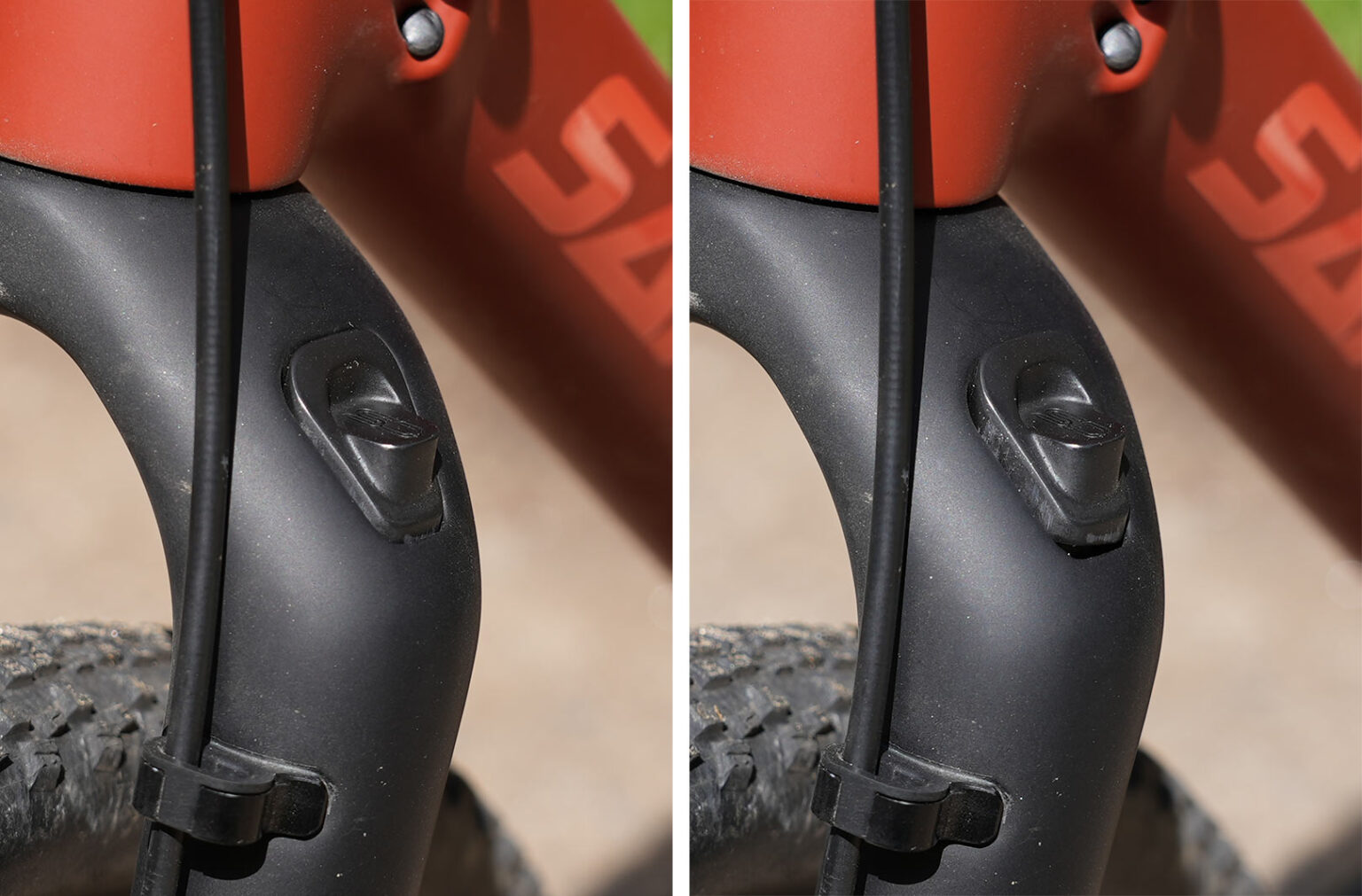
The button sits flush with the crown when the fork is open, and is slightly raised when it’s locked out. The brake hose guide is tool-free, just slide the slotted rubber bit up and out to free the hose.
Other features
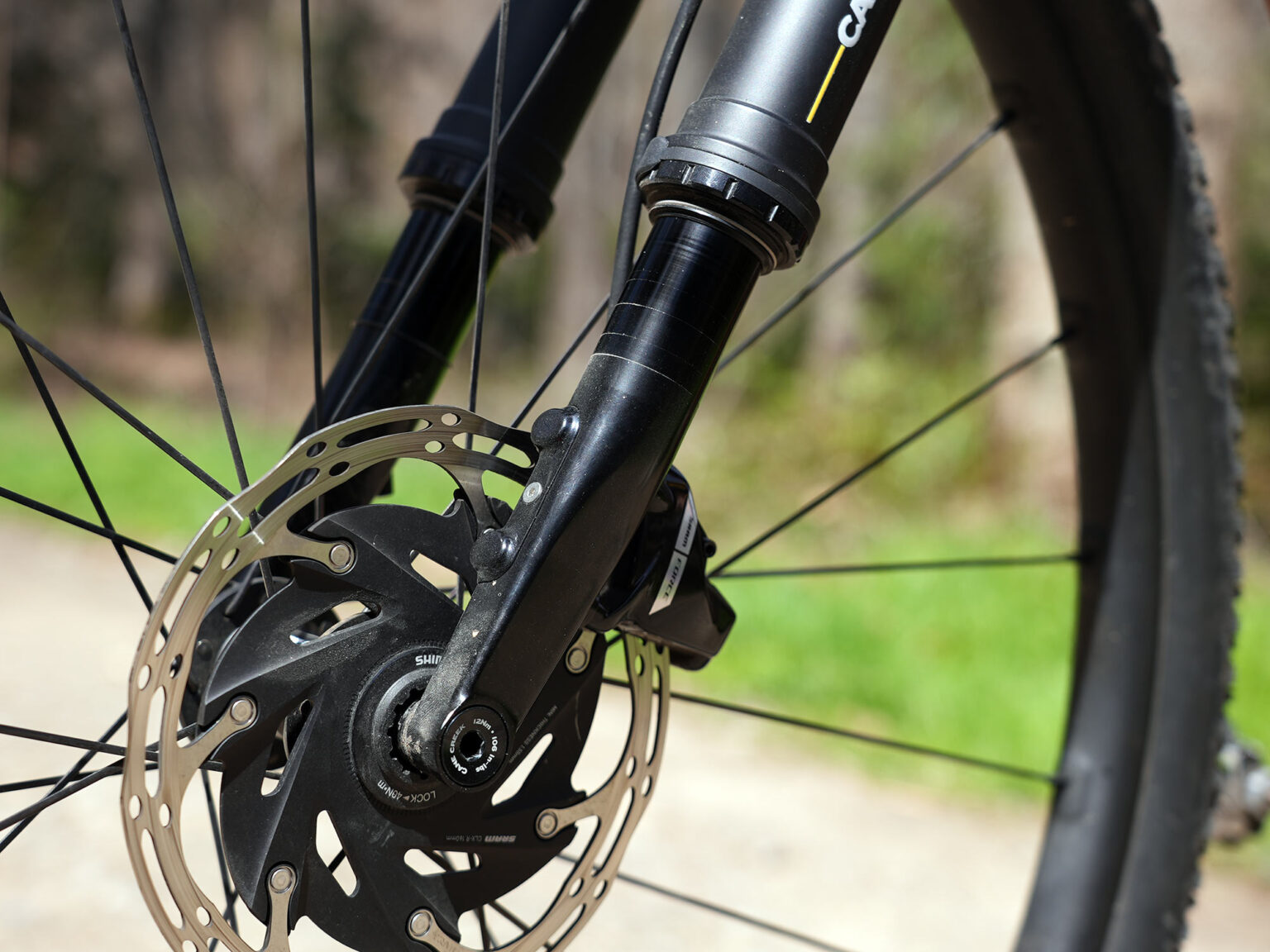
The front brake requires no adapter for a 160mm rotor, and it bolts in from the front of the fork. A small cover plate bolts on over the caliper mounting bolts to hide them.
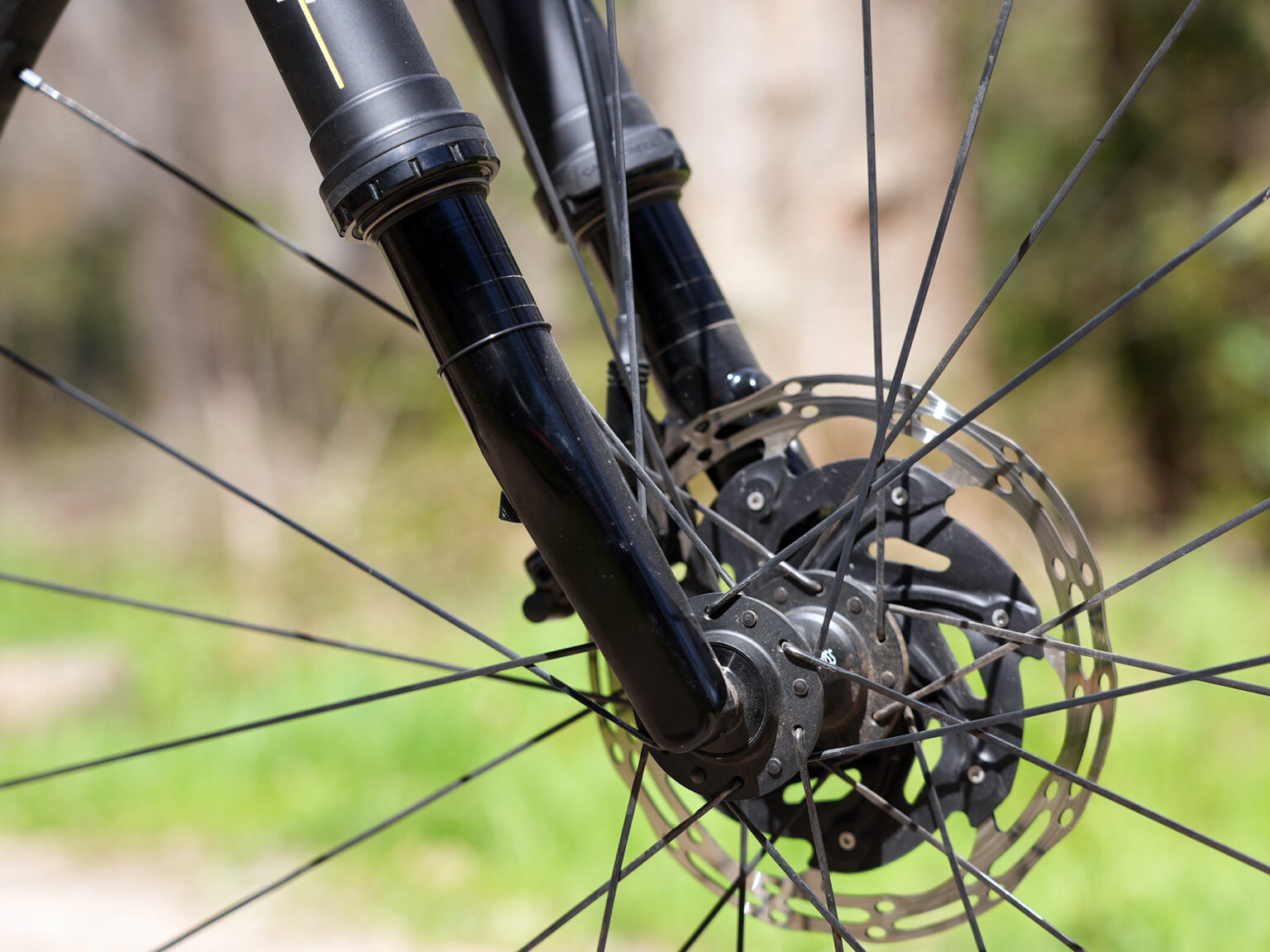
The right dropout is covered to hide the the thru axle for a smoother, stealthy look.
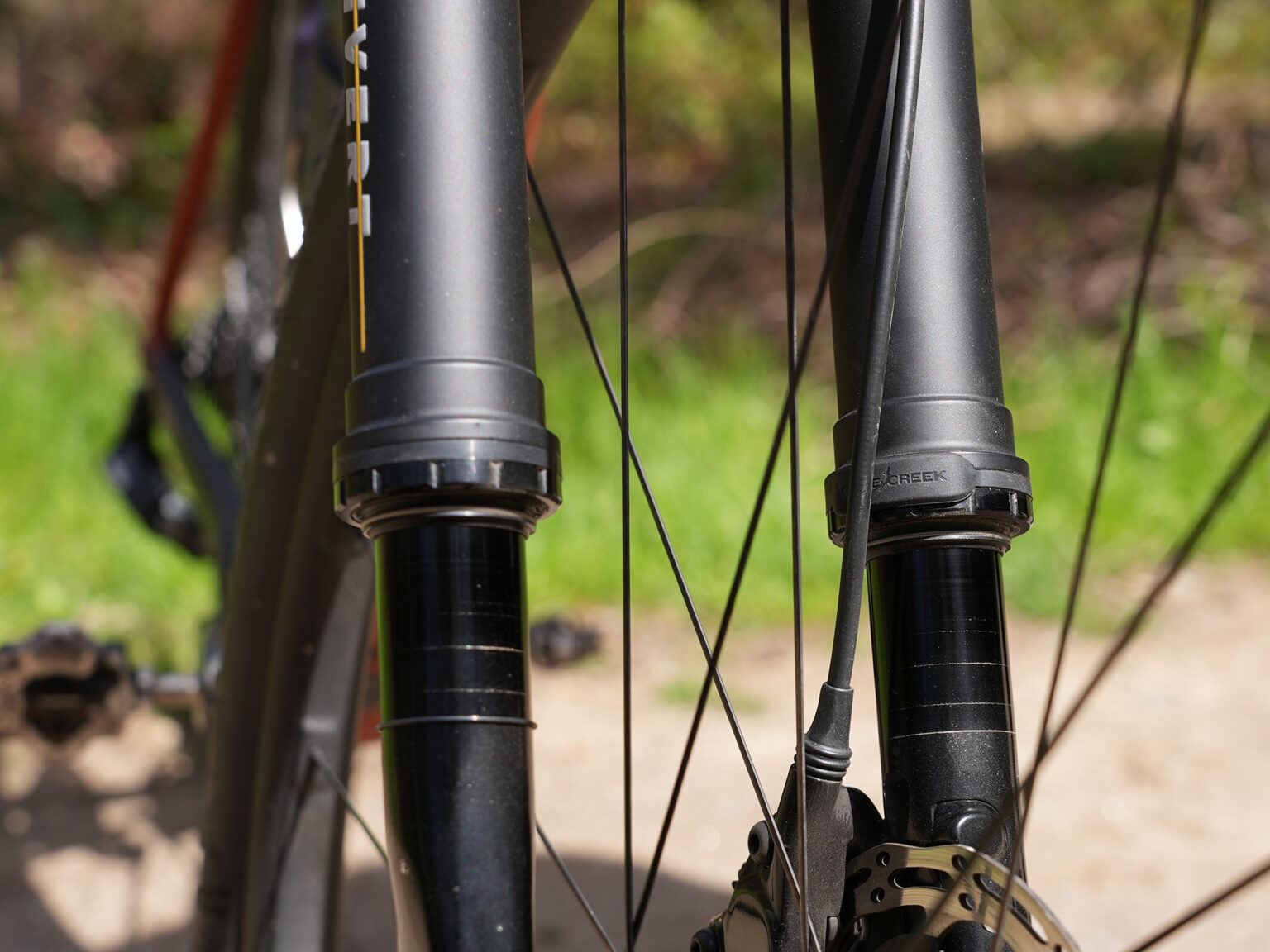
A rubber bumper slots into a groove on the right to keep the brake hose from rubbing against the hardware. That groove is found on both sides of the fork and will eventually serve as an attachment point for cage mounts, letting you easily use the Invert for bikepacking, too!
It’s easy to service, too
Lower seals are removed with a 12-notch bottom bracket tool (Cane Creek, Race Face CINCH, DUB, etc.). Just slide the seals down, drain the oil, add fresh oil (5ml of 15wt oil per leg), re-tighten the seals, then go ride. You don’t even have to let the air out of the spring because the lowers don’t need to be removed to service it.
If you did want to add or remove spacers, you’d let the air out of the spring first, unbolt the air spring shaft at the top, then follow the service instructions to loosen the lower seals and slide the lowers all the way out. It’s easy.
Cane Creek Invert models & pricing

Cane Creek is launching with two models, both of which go on sale in early Summer 2024:
Invert SL
- 30mm travel
- No climb switch button
- 425mm ATC
- 45mm offset
- 990g claimed weight
- Raw carbon to black fade upper
- MSRP $1099.99
Invert CS
- 40mm travel
- 435 ATC
- 45mm offset
- Full matte black upper
- Firm mode with single click Climb Switch
- 1113g claimed weight
- MSRP $1,199.99
The claimed weight is with the steerer tube cut to 165mm, without thru-axle or brake mounting bolts. They say this lets you more accurately compare it with other brands’ claimed weights. Fortunately, the thru-axle, brake bolts, and expander plug combined only add 67.70g.
You can’t upgrade to add the Climb Switch if you start with the SL, because the SL has no hole in the carbon crown for the lockout switch. But, and this is not an official option from Cane Creek, but I confirmed by asking several times to several of their people, you can change from 30mm to 40mm of travel, or vice versa. You’ll have to order the other air spring, those parts are different, but if you wanted a 40mm SL, it’s possible.
Small parts & fitment
The Invert comes with a Cane Creek ZN40 lower headset bearing that’ll fit 97% of bikes running a 52mm lower bearing. This is because many headsets use a 45º crown race interface, so by including their bearing to match the fork’s 36º crown race, it’s an easy install right out of the box. They also include their Ancora expander plug (25g).
The Invert fork fits any gravel bike frame that fits a standard tapered 1.125”-1.5” fork, including metal bikes that use a 44mm straight head tube with standard tapered headset. Which means it fits most bikes on the market barring a few random exceptions.
If your bike isn’t “suspension corrected” (anything under 420mm axle-to-crown), it will raise your front end and shorten the reach slightly, but most modern gravel bikes are close enough that your geometry won’t be terribly impacted.
Does it work?
Yep, check out my first impressions here for thoughts on its performance.
